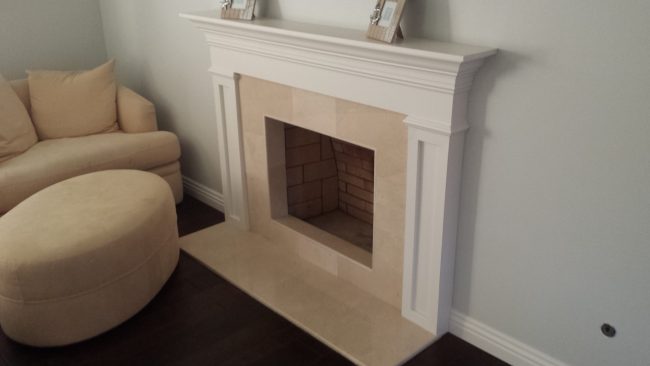
Ventless fireplaces are exactly what their name makes them out to be: natural gas or propane fireplaces that don’t require a chimney in order to run. For many homeowners this is exactly the product they’ve been looking before. Because vents or chimneys are unnecessary, vent free fireplaces are much cheaper to install than vented models, and can be placed in rooms where previous fireplaces simply weren’t an option, such as small dens and bedrooms. If you’re looking for a cost-effective fireplace or if you didn’t think your home could accommodate a fireplace at all, take a long look at a vent free fireplace to meet your fireplace needs.
How Do Ventless Fireplaces Work?
A ventless gas fireplace works on a fairly simple principle. When installed, the “fire” is adjusted to burn at optimum efficiency, minimizing the production of harmful carbon monoxide gas and moisture to a safe level that can be vented into the home. The result is a comfortable, clean burning fire that burns much more efficiently than ventless fireplaces, saving you money on your gas bill in the process. As mentioned before, the implications this has on where a fireplace can be installed is what has really caused ventless fireplaces to take off with homeowners across the country, since they can be easily installed in just about every room of a house.
Things to Consider
Because ventless gas fireplaces do vent into the home rather than to the outside through a chimney, it is very important that you choose an appropriately-sized model for the area you plan to use it in. Not doing so can lead to unsafe carbon monoxide levels and damaging moisture build-up in your home. For this and other reasons, installing a ventless gas fireplace is not a do-it-yourself job. Improper installation by a weekend handyman who doesn’t know the ins and outs of these units can lead to disastrous consequences, including carbon monoxide poisoning and even death. When installed and properly adjusted by an experienced, certified ventless gas fireplace installer, however, these units are more than safe. Ventless fireplace features such as carbon monoxide and oxygen sensors that shut the flame down if unsafe levels are detected are standard fare on these fireplaces, protecting you and your family from potential harm. Combine this with responsible ownership (it is recommend you burn these fireplaces no more than 4 hours a day), and there’s really nothing to worry about. In the end you’ll have a cost-effective, energy efficient vent free fireplace that will bring you many a cozy night cuddling up by the fire.
 Turn Your Fireplace into a Work of Art with a Fireplace Surround
Turn Your Fireplace into a Work of Art with a Fireplace Surround  Preventive Maintenance: Chimneys
Preventive Maintenance: Chimneys  Chimney Bombs
Chimney Bombs  Stoking the Fire: Fireplace Remodels
Stoking the Fire: Fireplace Remodels  Enjoy Summer Nights with an Outdoor Fire Pit
Enjoy Summer Nights with an Outdoor Fire Pit 

Does a gas stove require a vent outside? Recently a friend remodeled kitchen a covered up vent in ceiling above stove and is using gas not electric stove. I know electric stoves don’t have outside ventilation but I thot gas requires it. I would appreciate your response if you have one on this subject. Thanks, Pat
We are installing a vent free fireplace in our new home which is under construction. It will be framed out with wood in a traditional mantel and two side pillars’ style with tile between the wood and the firebox. The plans currently call for the sides to be covered with wood. But I have seen fireplaces that have shelves on the side instead of being covered with wood. The sides of the wood frame-out would accommodate shelves on both sides. I would use the shelves for books and decorative pieces. Is it safe as far as the heat which would be generated buy the fireplace? Thank you so much for you answer.